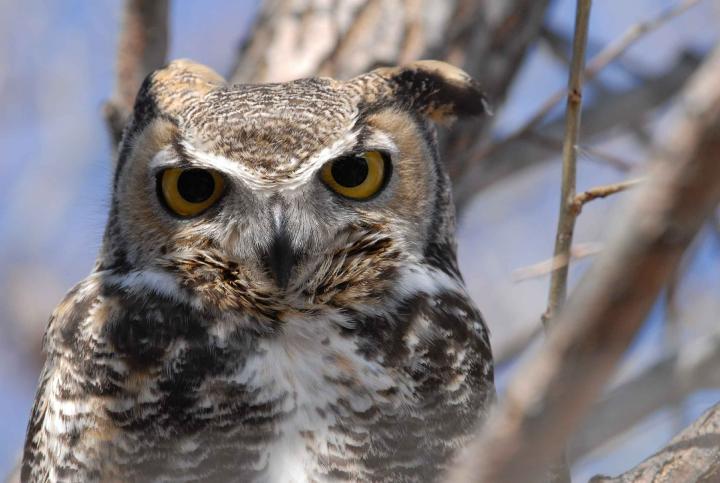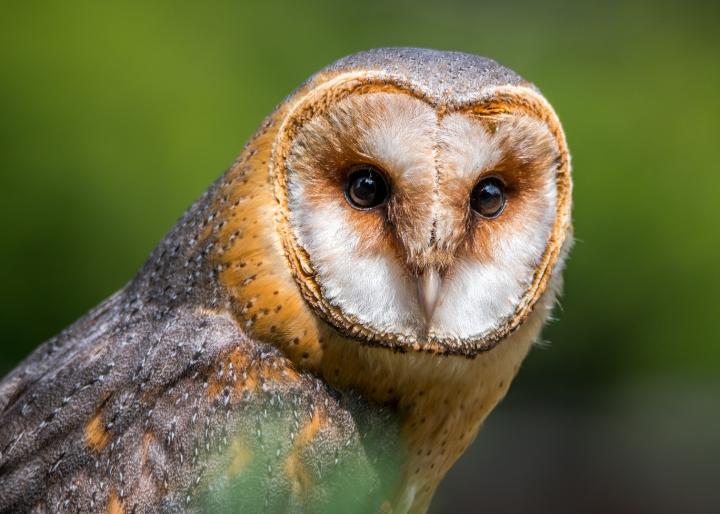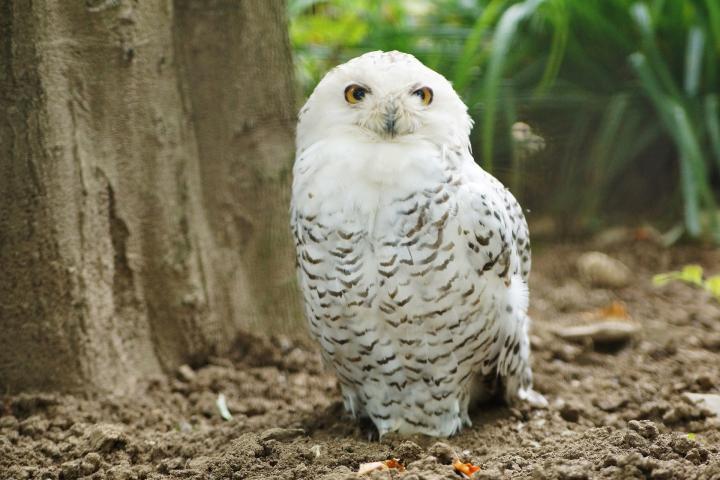
Learn About the Ever-Interesting Owl
ADVERTISEMENT
We live on a farm just North of Oskaloosa, KS. Several years ago there was an injured horned owl in our Rose of Sharon bushes it was at least 3’ tall, and beautiful. Our neighbor, an avid outdoorsman and animal lover caught the owl in a huge kennel and took it to a wildlife sanctuary. Unfortunately the owl had been injured and had broken it’s lower back. He was too far gone to save, very sad situation. We do see owl often around our barns and have seen other horned owls since then. We also have Bald Eagles that we frequently see.
My Dad had a pet barn owl when he was a kid. The owl was perfectly capable of hunting for itself, but loved raw hamburger which Dad often brought it as a treat. It lived in the barn, so there were never mice or rats in the corn crib by the barn. Dad would whistle and hold out a dish with the hamburger in it, and the owl would fly down, land on the edge and eat the meat. Later, he'd land on Dad's arm and take the meat out of his hand. After a few years, the owl disappeared, so Dad presumed he had died, and no other owl ever lived in the barn after that. here on Long Island we have owls, and now and then I hear them on summer nights.
I was hunting deer in east Texas. I perched on a climbing stand about 12 feet up in a pine tree about 30 minutes before sunrise. Very quiet woods that early. All of a sudden, an extremely loud HOO! HOO! blasted my ears! I turned to the sound and it was a great horned owl in a tree not 10 feet from me. Scared me silly! But I had to marvel at it’s ability to stay calm in my intrusion.
Sadly to say, where we moved to 40 years ago had the Great Horned Owl. It came almost every early morning to our front yard. I’d get up, sneak out and see it; I saw it fly over to the power lines where I could really see its image. Sadly now with all the housing going up, woods being cut, just more people, the owls are gone; so are our Whippoorwills, Quail and many creatures that helped make our decision to move here. It’s so disheartening. They call it “Progress”.
the book "Silent Spring" written some years ago seems to be repeating the loss of many birds now due to colonization everywhere rather than the original villein DDT.
One of the things I regret most when it comes to wildlife encounters was not having a camera ready when I came across a very large Great Horned Owl that was stuck in my batting cage in the backyard. Frequently, smaller birds take shelter in the cage when hiding from predators, and this owl must have been hungry enough as it forced its way through a very narrow opening on top of the cage. Being shocked to find this beautiful animal and not knowing how to deal with this situation, I decided to wait and see if this owl would find its way back out, but she was not able. I used a pool skimmer to get the owl to get down to a level where I was able to grab it, and I took a large winter coat and grabbed ahold of what seemed like 20lbs of solid muscle. I took the owl out of the cage and let her lay on the grass. I was afraid she was hurt because she was sprawled out and not moving. I watched for a couple of minutes and then I decided to go grab a bowl and water, but as soon as I took a couple of steps and looked back to the owl, she was silently gliding across the top of the soybean field. It was a beautiful sight to behold.
Beautiful story; I'm hoping to get into Nature Photography myself; so many Nature pictures around;
Nothing as fun as calling back to an owl, and having it return its call, or even flying over to you for a closer look!
I live in a very remote area in N. Alabama, with hundreds of acres of forest around me. My front porch has old multi paned windows that I can lean inward at the top in the warm months, no screens necessary. One morning I went out and to my surprise a screech owl had roosted on one of the ceiling ledges. I very quietly moved back into the house for fear the owl might be frightened and fly into the windows and hurt itself. I could see that it couldn't figure out how to exit. For some reason I felt compelled to offer my hand to that owl. Not knowing how sharp the claws were, I put a glove on and moved very slowly to where he/she was perched. Absolutely the most amazing thing, the owl stepped over on my hand, I lowered it to the opening, and it flew away. This was one of the most incredible things I never knew I could do.
South Georgia around midnight until 2 ish I can hear a Great horned owl calling in the 1/2 acre behind my house. At 6:30 in the morning last week, I heard the call of a barn owl, chich I had never heard before in real life. When researching to teach my students about owls, we learned from Mystery Science that owls have a territory and call out to tell other owls to stay away from their "food." My question is, do these owls share the same territory and just hunt at different times, or could one be trespassing, possibly while the other is sleeping or hunting elsewhere?











